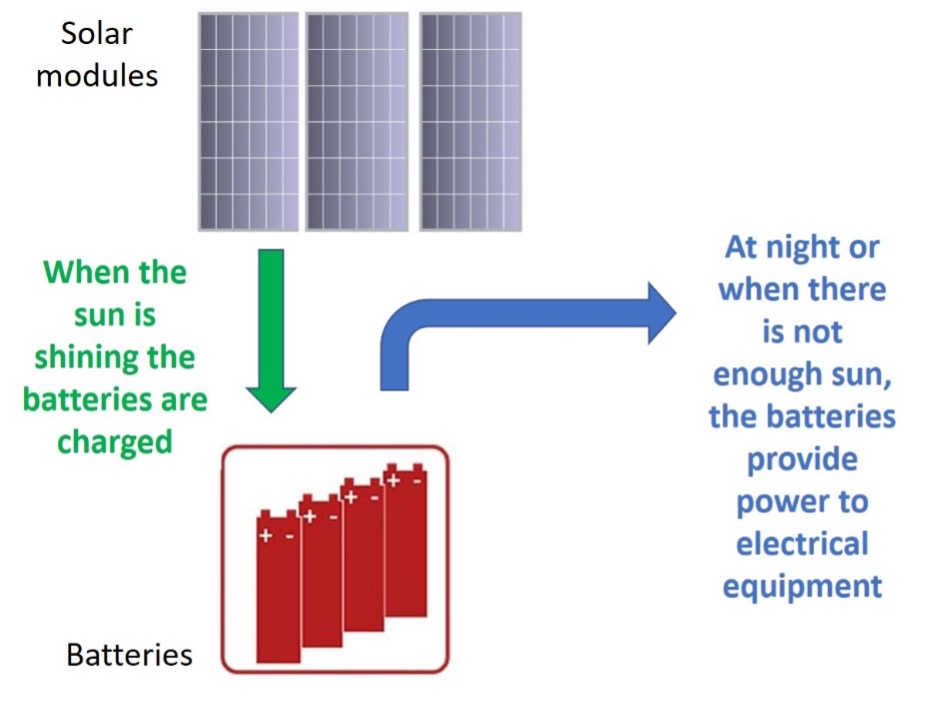Batteries are used in off-grid and backup PV systems.
In off-grid systems, they are used to provide electricity to run equipment at night and to cover energy needs during periods of low sunshine.
In back-up systems, they are used to provide electricity to run equipment at times when grid power is not available.
The two most common types of batteries used are:
- Lead-acid batteries
- Lithium-ion batteries

-
Charge and discharge cycle for a battery bank in a PV off-grid system. Battery banks should be sized to cover days with low levels of solar radiation. Between 2 – 5 days extra storage capacity is usually required, depending on system type, application and climate.
In most off-grid PV systems, the battery is the most expensive component because it needs to be replaced several times over the course of the system’s lifespan. Lithium-ion batteries have longer service lives but can be up to four times more expensive to purchase.
There are many different types of both lead-acid and lithium-ion batteries, and every brand of battery has different specifications. Datasheets must be referred to for specific information.
Batteries are hazardous. Only qualified personnel should install and maintain them. They need to be installed in safe locations, with appropriate fuses or circuit breakers, and following the requirements specified by the battery manufacturers. When stored, batteries also need frequent recharging as they self-discharge over time even without usage.
It is important to consider how the battery can be disposed of at the end of its working life (recycled). This of course applies to all other system components as well.

Other research has been focused on the family of fibroblast growth factors FGFs, which affects embryo implantation and supports improved endometrial trophoblastic interaction 36 priligy united states